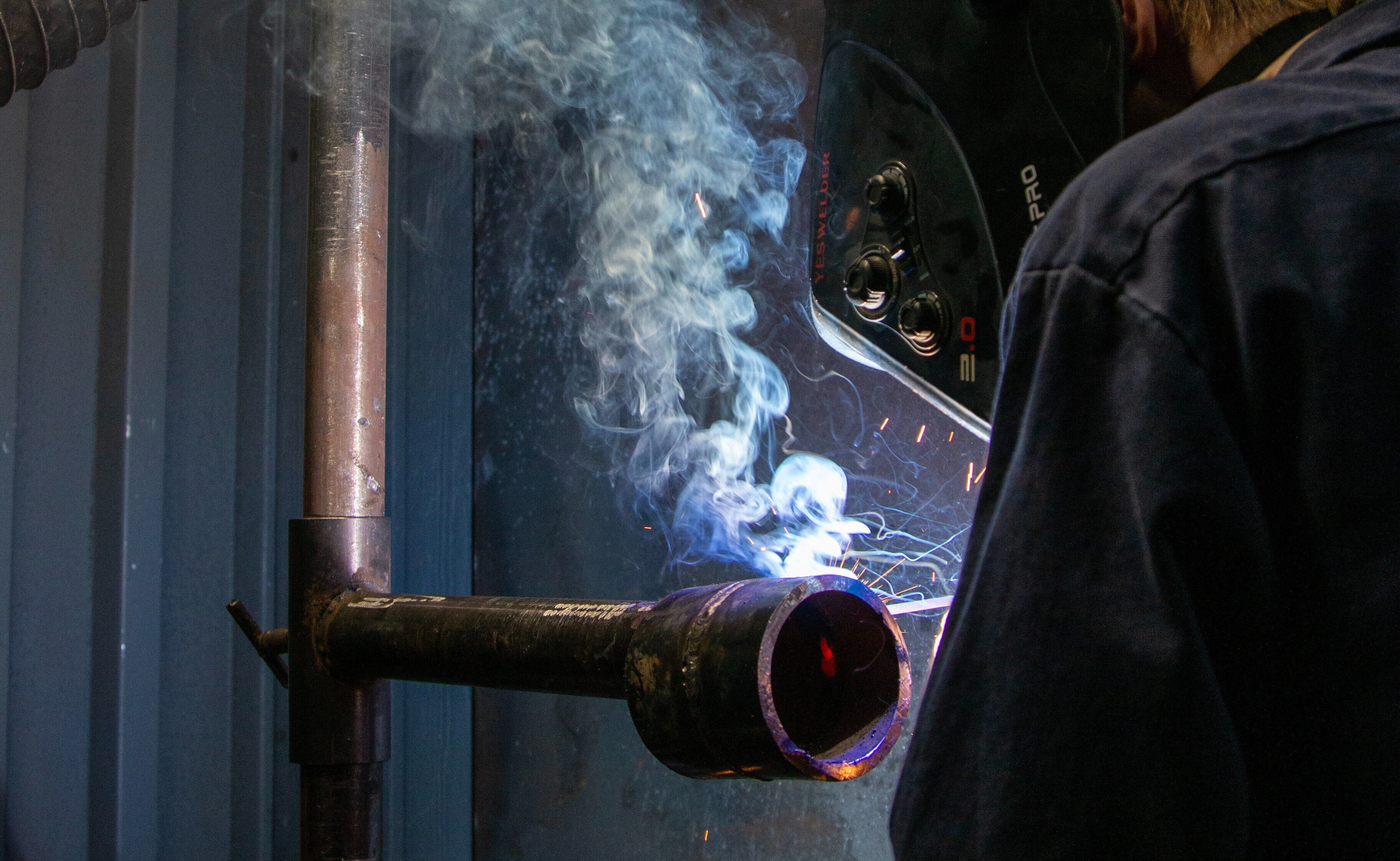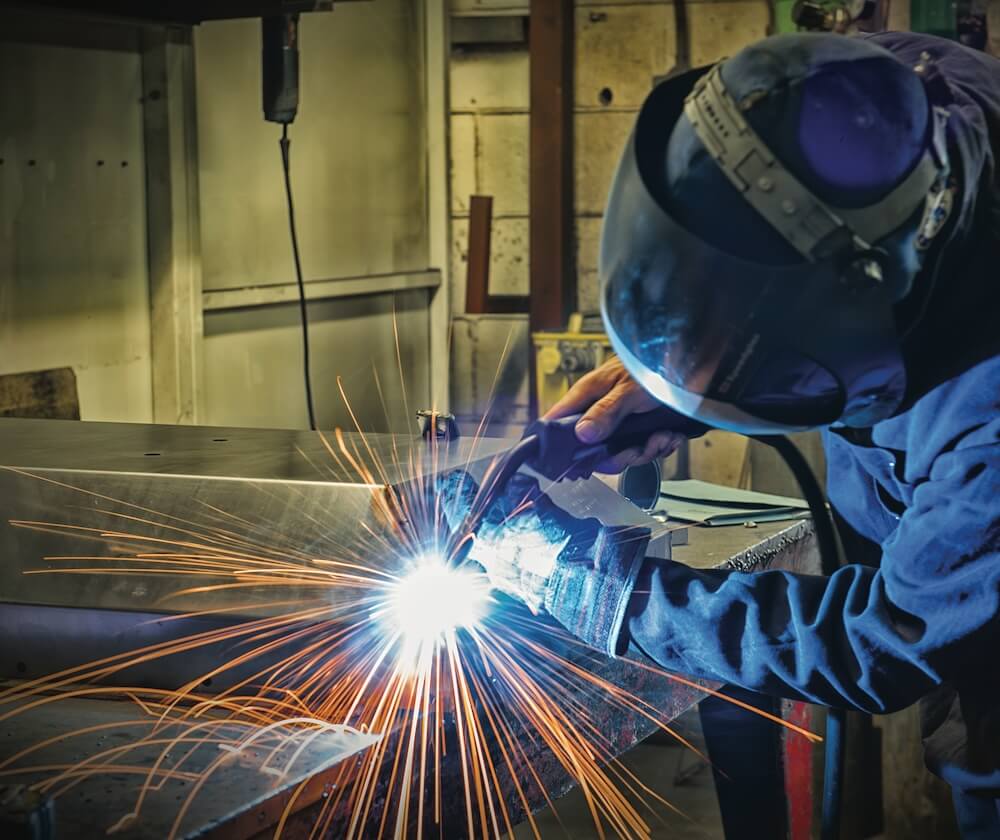Usual Welding Repair Issues and Just How to Address Them Successfully
Welding repair services often encounter a series of concerns that can jeopardize the stability of the last product. Usual problems include insufficient infiltration, porosity, and imbalance, to name a few. Each flaw provides special difficulties that need specific strategies for resolution. Understanding these problems is crucial for welders aiming to enhance their outcomes and skills. This discussion will check out these common welding repair service concerns and reliable methods to address them.
Poor Infiltration
Poor penetration occurs when the weld metal fails to fully fuse with the base product, resulting in weak joints and potential structural failures. This problem usually originates from insufficient warmth input, incorrect electrode angle, or incorrect welding rate. Welders may come across poor infiltration because of a miscalculation of the necessary specifications for a details material density or kind. In addition, contamination on the base product's surface area can impede efficient bonding, exacerbating the problem. To deal with poor penetration, welders must assure suitable setups on their devices and preserve a tidy job surface area. Regular evaluation of welds is recommended to identify any shortages early, enabling timely modifications and the prevention of endangered structural integrity in bonded assemblies.
Porosity
Porosity is an usual flaw in bonded joints that manifests as tiny gas bubbles caught within the weld metal. This flaw can endanger the stability of the weld, causing lowered strength and potential failing under stress and anxiety. Montana Mobile Welding and Repair Belgrade. Porosity generally develops from contamination, dampness, or incorrect welding strategies, which permit gases to run away right into the molten weld swimming pool. To address porosity, welders ought to guarantee proper surface preparation, maintain a tidy functioning environment, and make use of suitable welding parameters. Additionally, choosing the best filler material and shielding gas can alleviate gas entrapment. Regular inspection and screening of welds can aid recognize porosity early, assuring prompt corrective actions are taken, thereby maintaining the high quality and dependability of the welded framework
Misalignment
Imbalance in welding can arise from different elements, consisting of inappropriate setup and thermal development. Understanding the source is important for effective resolution. A number of improvement techniques are offered to realign parts and assure architectural integrity.
Reasons for Misalignment
Welding imbalance typically originates from a variety of underlying issues that can endanger architectural integrity. One primary cause is incorrect fit-up of parts before welding, which can bring about gaps and irregular surface areas. Variations in thermal development throughout the welding procedure can likewise result in distortion, especially if the products being signed up with have various coefficients of growth. Additionally, insufficient fixturing and clamping may stop working to hold parts securely in position, resulting in motion throughout welding. Inadequately conserved devices, including welding equipments and tools, may present disparities in the weld grain, further adding to imbalance. Operator error, stemming from inadequate training or experience, can also play a substantial duty in producing misaligned welds.

Adjustment Strategies Readily Available
Resolving misalignment successfully requires a mix of rehabilitative strategies customized to the specific issues at hand. One common approach is making use of fixtures or jigs to hold parts in the appropriate setting throughout welding, making certain constant placement. Additionally, pre-heating the materials can help in reducing distortion and improve fit-up. For significant imbalance, mechanical realignment methods, such as utilizing hydraulic jacks or clamps, can be employed to remedy the position before welding. Post-weld heat therapy might likewise be required to ease stress and anxieties brought on by misalignment. Ultimately, careful assessment and change during the arrangement stage can avoid misalignment concerns from coming to be significant troubles, advertising a smoother welding procedure and improving general architectural stability.
Distortion
Distortion is a common difficulty in welding that can occur from different variables, including unequal heating and air conditioning. Understanding the sources of distortion is vital for carrying out reliable prevention methods. Addressing this concern not only enhances architectural honesty however additionally boosts the general high quality of the weld.
Sources of Distortion
When subjected to the intense warmth of welding, materials often go through adjustments that can cause distortion. This sensation mainly arises from thermal development and tightening throughout the welding procedure. As the weld location warms up, the material increases; upon air conditioning, it contracts, which can develop interior tensions. Furthermore, unequal heating across a workpiece can intensify these stress and anxieties, resulting in warping or bending. The kind of product also plays a substantial duty; metals with differing thermal conductivity and coefficients of development might react in a different way, leading to uncertain distortions. Furthermore, poor joint design and insufficient fixturing can add to imbalance throughout welding, increasing the probability of distortion. Understanding these reasons is vital for efficient welding fixing and avoidance strategies.
Avoidance Techniques
Effective avoidance strategies for distortion throughout welding focus on regulating heat input and making certain appropriate joint style. Keeping a constant warm input helps to reduce thermal growth and tightening, which can result in distortion. Making use of methods such as pre-heating the workpiece can additionally lower the temperature slope, promoting uniform home heating. Additionally, picking ideal joint designs, such as T-joints or lap joints, can improve security and reduce tension concentrations. Applying correct fixturing to secure the workpieces in position further aids in maintaining placement during the welding process. Staggered welding sequences can distribute heat much more evenly, avoiding localized distortion. By using these methods, welders can greatly reduce the chance of distortion and enhance the overall high quality of their welds.
Cracking
Cracking is a common concern encountered in welding repair read review services, frequently resulting from numerous elements such as incorrect air conditioning rates, product choice, or insufficient joint prep work. The occurrence of cracks can significantly compromise the integrity of the weld, bring about potential failings throughout procedure. To address this concern, welders must first analyze the source, making certain that products work and suitably picked for the details application. In addition, managing the air conditioning price throughout the welding procedure is important; quick cooling can generate tension and lead to fracturing. Proper joint style and preparation additionally contribute to reducing the threat. Carrying out these strategies can enhance weld top quality and sturdiness, ultimately reducing the probability of cracking in finished weldments.

Insufficient Combination
A significant issue in welding repairs is insufficient combination, which happens when the weld steel does not adequately bond with the base material or previous weld passes - Welding. This issue can cause weaknesses in the joint, possibly endangering the honesty of the bonded framework. Elements adding to incomplete fusion consist of not enough warm input, incorrect welding technique, and contamination of the surface areas being signed up with. To address this problem properly, welders need to ensure appropriate pre-weld cleansing and surface preparation, along with change their welding criteria to accomplish adequate penetration and combination. Routine evaluation throughout the welding process can additionally help recognize insufficient combination early, allowing for prompt rehabilitative procedures to enhance the general high quality of the weld
Overheating
While welding fixings can boost structural integrity, overheating presents a considerable difficulty that can lead to material destruction. Excessive heat throughout welding can alter the mechanical properties of steels, resulting in minimized toughness, raised brittleness, and warping. This sensation is particularly important in high-stress applications where structural integrity is vital. Identifying overheating can include visual assessments for staining or distortion, in addition to checking temperature level during the auto darkening welding lens welding procedure. To mitigate the threats related to overheating, welders should use ideal techniques, such as controlling warmth input, adjusting travel rate, and utilizing appropriate filler products. In addition, executing pre- and post-weld heat treatments can help restore material residential properties and enhance the general high quality of the repair work, guaranteeing lasting performance and safety.
Frequently Asked Concerns
What Are the Typical Indications of a Welding Problem?

Exactly How Can I Test My Welds for Top quality?
To test welds for top quality, one can use aesthetic examinations, ultrasonic testing, and radiographic approaches. Each strategy assures structural integrity, determines issues, and verifies adherence to specified requirements, ultimately improving the integrity of the bonded joints.
What Safety Preventative Measures Should I Take While Welding?
When welding, one ought to official statement prioritize safety by wearing proper individual protective equipment, making sure correct ventilation, securing flammable materials away, preserving a clean work area, and understanding environments to protect against crashes and injuries.
Can I Fix a Weld Without Redoing the Entire Joint?
Fixing a weld without redesigning the entire joint is feasible, relying on the damage (Belgrade Fabrication). Strategies such as grinding, including filler product, or utilizing a welding procedure can successfully attend to particular problems while maintaining the surrounding framework
What Devices Are Necessary for Reliable Welding Repair Works?
Crucial tools for effective welding fixings include a welding device, cord brush, mill, safety equipment, clamps, and filler products. Each tool plays a vital function in guaranteeing high quality and security during the fixing procedure. Porosity usually arises from contamination, dampness, or incorrect welding techniques, which permit gases to get away into the liquified weld pool. Improperly kept equipment, including welding equipments and tools, might present inconsistencies in the weld grain, more contributing to misalignment. When subjected to the intense warm of welding, products typically undertake modifications that can lead to distortion. Splitting is a typical concern run into in welding repairs, usually resulting from different aspects such as improper air conditioning prices, material selection, or inadequate joint prep work. A significant problem in welding repair work is incomplete combination, which happens when the weld steel does not effectively bond with the base product or previous weld passes.